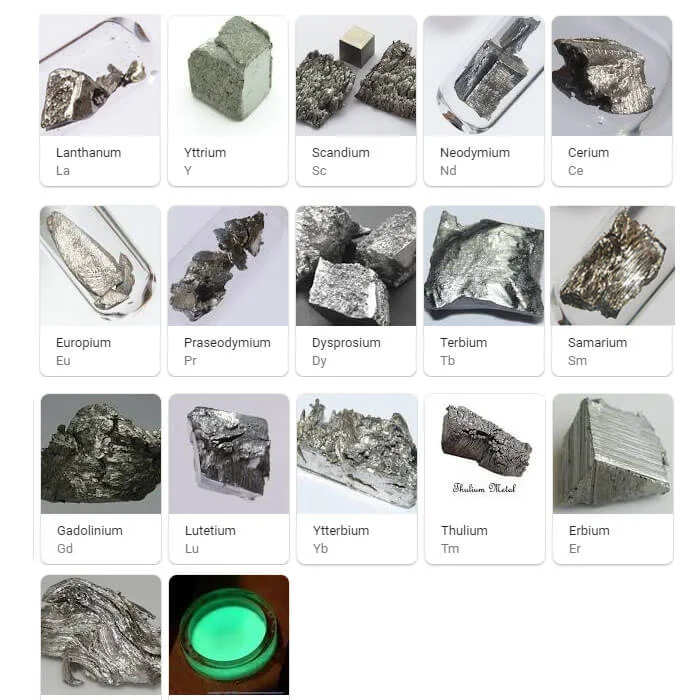It’s tempting to view Beijing’s latest restrictions on rare earth exports as just another move on the geopolitical chessboard. Another volley in the ongoing trade skirmish with the U.S., timed perfectly ahead of the anticipated Trump-Xi meeting. That narrative is simple, clean, and misses the entire point. The headlines will focus on the 12 specific metals now under control and the threat to F-35 fighter jet production lines. But the real story, the one with lasting structural implications, isn't about the materials themselves. It's about the mechanism. China tightens export controls on rare-earth metals: Why this matters
China has just adopted, refined, and turned one of America’s most potent economic weapons back on itself.
For years, Washington has used a powerful and far-reaching tool called the Foreign Direct Product Rule (FDPR) to control the global semiconductor supply chain. In essence, it allows the U.S. to claim jurisdiction over foreign-made goods if they were produced using American technology, software, or equipment. It’s a brilliant piece of legal engineering that extends U.S. policy far beyond its borders. Now, China is doing the exact same thing with rare earths. This isn't just an export ban; it's a fundamental change in the architecture of supply chain control.
The Anatomy of a New Weapon
The core of Announcement No. 61 is the application of this FDPR logic. Under the new rules, effective December 1, any foreign company producing magnets that contain even trace amounts of Chinese rare earths—or were made using Chinese mining, processing, or magnet-making tech—must get a license from Beijing. The specified threshold is a mere 0.1% of heavy rare earth content sourced from China.
Let’s be precise about the market dominance here. China accounts for roughly 70% of rare earth mining, but that’s the misleading number. The real leverage is downstream. They handle about 90% of the complex separation and processing and 93% of high-strength magnet manufacturing. This isn't a simple commodity chokehold; it's a near-total monopoly on the value-added industrial processes. This makes the 0.1% threshold incredibly potent. It’s like a software EULA for the physical world; if you’ve used even a single line of their code, they own a piece of your final product.
And I’ve looked at hundreds of trade filings and export control regimes over the years; this is the part I find genuinely puzzling from an enforcement perspective. How does the Chinese Ministry of Commerce intend to audit a global supply chain for a 0.1% material content rule? The compliance burden alone is staggering. Does this suggest the rule isn't meant for universal application, but rather for selective, high-impact enforcement against specific targets? Is the goal not to stop all exports, but to create a cloud of uncertainty so thick that companies can't risk designing Chinese inputs into critical future products?
The policy goes further, explicitly targeting military end-users. License applications for any company affiliated with a foreign military will be largely denied, and requests to use rare earths for military purposes will be automatically rejected. They aren't even pretending this is purely about market stability. This is a direct shot at the U.S. defense industrial base, which is already struggling to produce platforms like Virginia-class submarines and Tomahawk missiles at the required pace. The Department of War (the recently renamed DoD) is facing a production gap, and Beijing just handed it a shovel to dig deeper. China’s New Rare Earth and Magnet Restrictions Threaten U.S. Defense Supply Chains

The controls also extend to human capital. Chinese nationals are now barred from supporting overseas rare earth projects without explicit government approval. This isn't just about walling off materials; it's about walling off the know-how that made China dominant in the first place. They’re locking down the talent, the techniques, and the technology—a complete vertical lockdown of the entire sector.
An Asymmetric Problem Demands an Asymmetric Response
The U.S. is, of course, not standing still. But the response highlights the fundamental asymmetry of the problem. Washington’s strategy is to build a new house while Beijing is threatening to turn off the water to the construction site. The efforts are commendable, but the timelines are concerning.
We have Noveon Magnetics, currently the sole domestic manufacturer of these magnets, partnering with Australia’s Lynas Rare Earths. This is a crucial step. But the centerpiece of the U.S. strategy is the massive government intervention in MP Materials. In July, the Department of War took a $400 million equity stake in the company, making the U.S. government its largest shareholder. This was paired with a $150 million loan to expand its Mountain Pass facility in California to handle the difficult "heavy" rare earth separation—a capability the U.S. currently lacks at scale.
The government's involvement is more than just capital. The deal includes a 10-year price floor of $110/kg for MP’s neodymium-praseodymium (NdPr) products and a 10-year offtake agreement for 100% of the output from its planned "10X Facility." This is an aggressive, state-led attempt to de-risk domestic production and shield a nascent industry from Chinese price manipulation. It's industrial policy on a scale we haven't seen in decades.
But these are 5-to-10-year solutions for a problem that becomes acute on December 1, 2025. Ramping up mining is one challenge; recreating the incredibly complex and environmentally fraught processing and magnet manufacturing supply chain is another entirely. China spent decades and untold sums (both economic and environmental) to achieve its dominance. Can the U.S. replicate that in a few years, even with massive government backing? And does creating a single, state-backed national champion in MP Materials truly foster a resilient, competitive market, or does it just create a dependency of a different kind?
This is the core dilemma. China’s leverage is immediate, flexible, and built on existing infrastructure. The U.S. response is long-term, capital-intensive, and still largely on the drawing board. Beijing’s announcement is a negotiation tactic for the upcoming summit, yes, but it’s also a clear signal. They are setting the terms of the future economic conflict, demonstrating that they’ve studied the U.S. playbook and are now ready to run their own plays.
The Leverage is in the Legalese
Let's dispense with the idea that this is just another temporary trade spat. The weaponization of the Foreign Direct Product Rule is a permanent structural shift. China is no longer just a supplier withholding a product; it is a licensor dictating the terms of use for its foundational technology across the entire global economy. While Washington scrambles to build mines and factories—a 20th-century solution—Beijing has deployed a 21st-century tool of legal and economic coercion. The upcoming talks between Trump and Xi may produce a temporary truce, but the underlying architecture of this conflict has been irrevocably altered. The most powerful restrictions aren't written on a list of banned metals; they're buried in the fine print.

